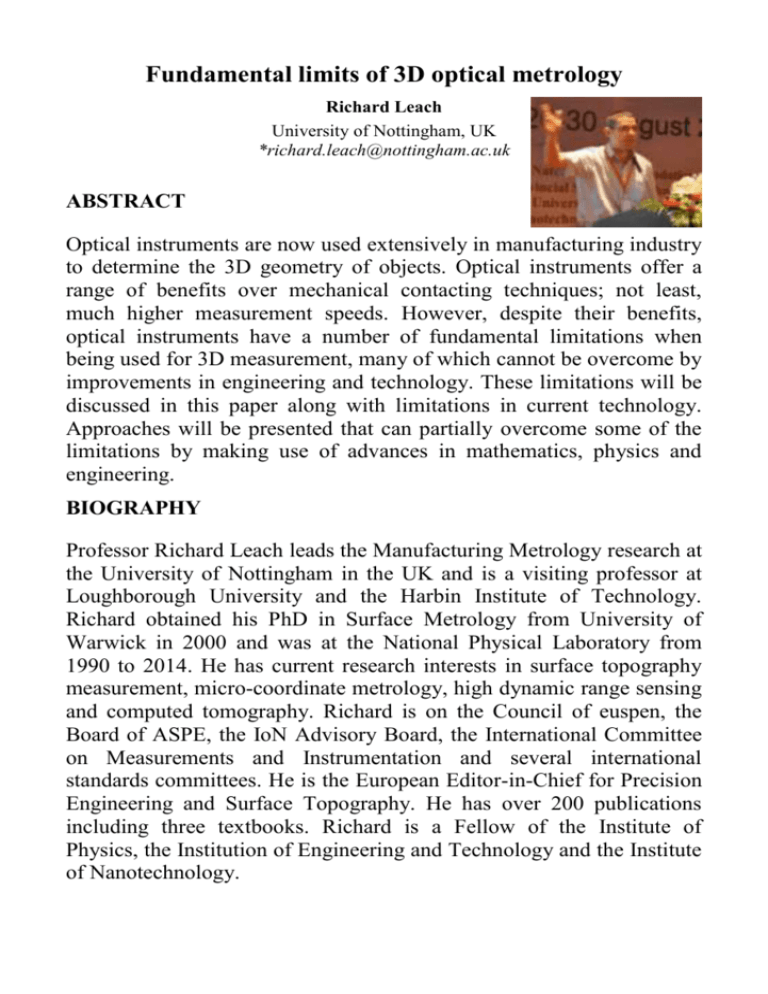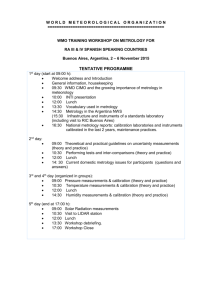Fundamental limits of 3D optical metrology
advertisement

Fundamental limits of 3D optical metrology Richard Leach University of Nottingham, UK *richard.leach@nottingham.ac.uk ABSTRACT Optical instruments are now used extensively in manufacturing industry to determine the 3D geometry of objects. Optical instruments offer a range of benefits over mechanical contacting techniques; not least, much higher measurement speeds. However, despite their benefits, optical instruments have a number of fundamental limitations when being used for 3D measurement, many of which cannot be overcome by improvements in engineering and technology. These limitations will be discussed in this paper along with limitations in current technology. Approaches will be presented that can partially overcome some of the limitations by making use of advances in mathematics, physics and engineering. BIOGRAPHY Professor Richard Leach leads the Manufacturing Metrology research at the University of Nottingham in the UK and is a visiting professor at Loughborough University and the Harbin Institute of Technology. Richard obtained his PhD in Surface Metrology from University of Warwick in 2000 and was at the National Physical Laboratory from 1990 to 2014. He has current research interests in surface topography measurement, micro-coordinate metrology, high dynamic range sensing and computed tomography. Richard is on the Council of euspen, the Board of ASPE, the IoN Advisory Board, the International Committee on Measurements and Instrumentation and several international standards committees. He is the European Editor-in-Chief for Precision Engineering and Surface Topography. He has over 200 publications including three textbooks. Richard is a Fellow of the Institute of Physics, the Institution of Engineering and Technology and the Institute of Nanotechnology.











